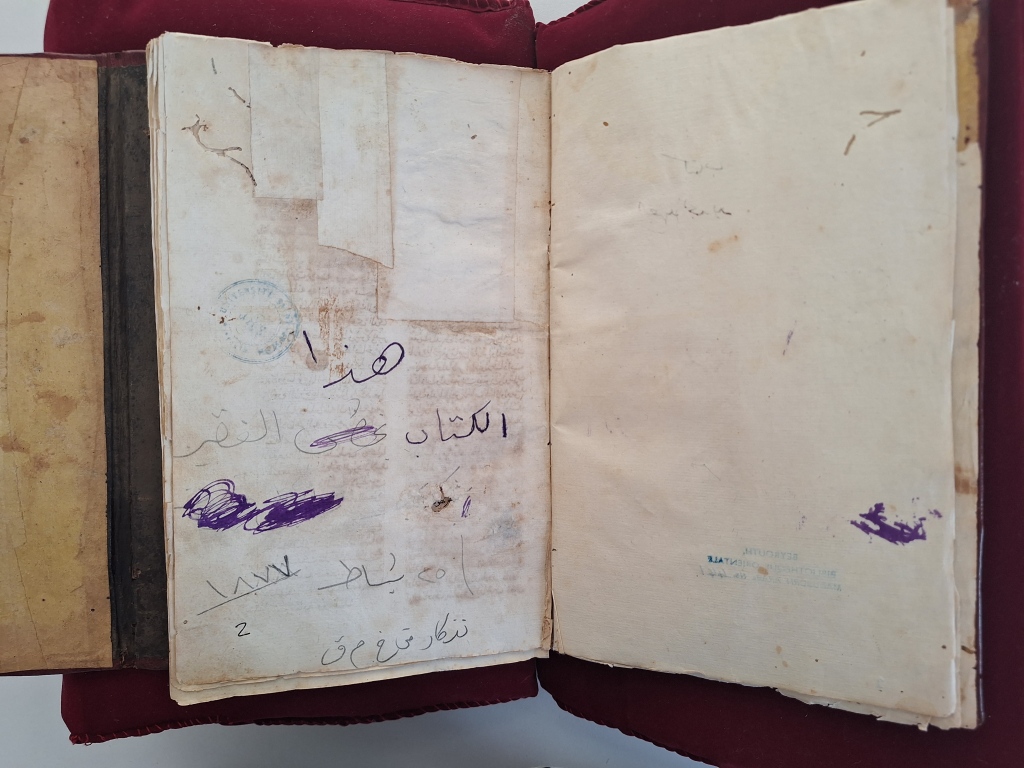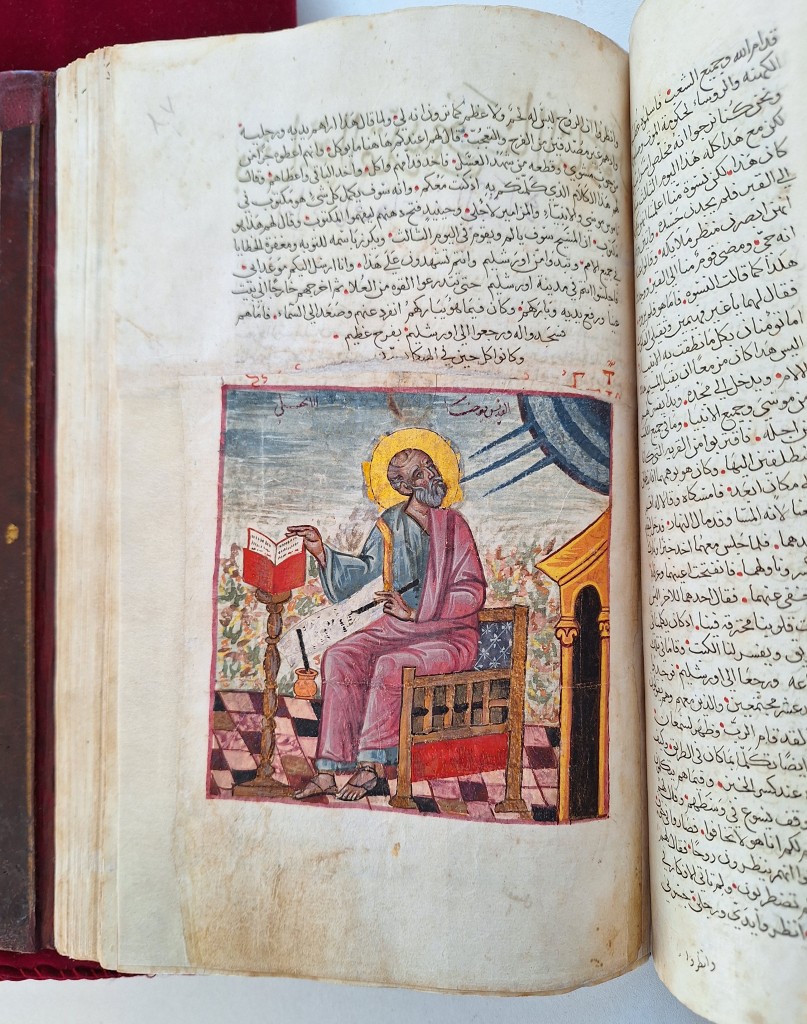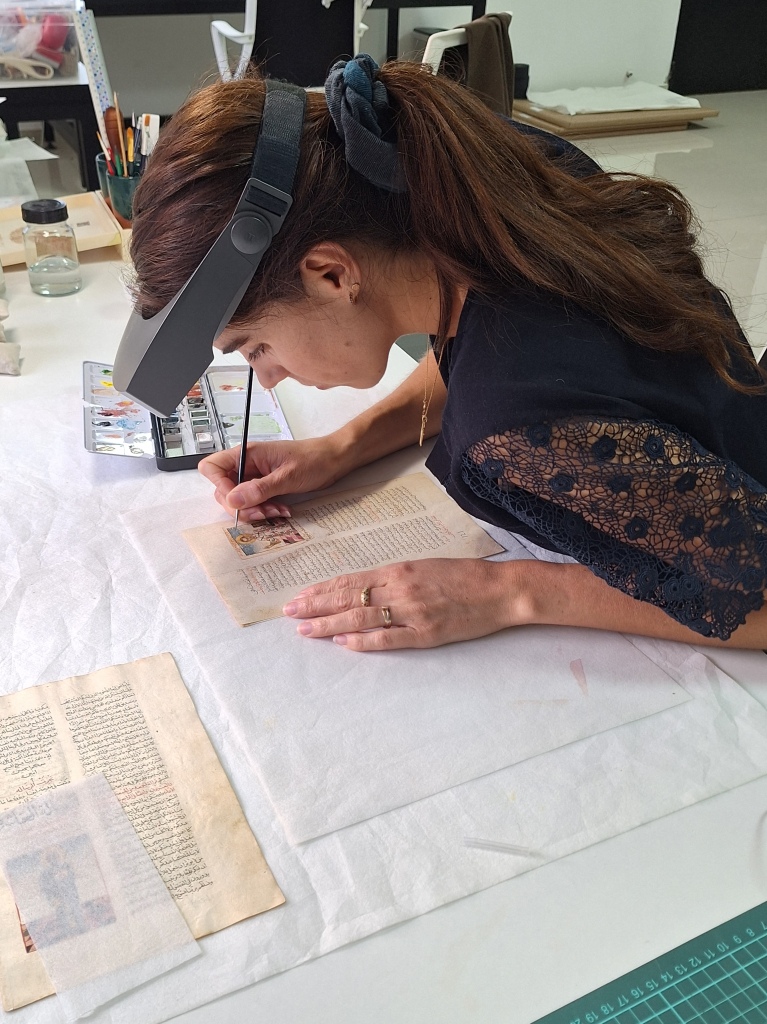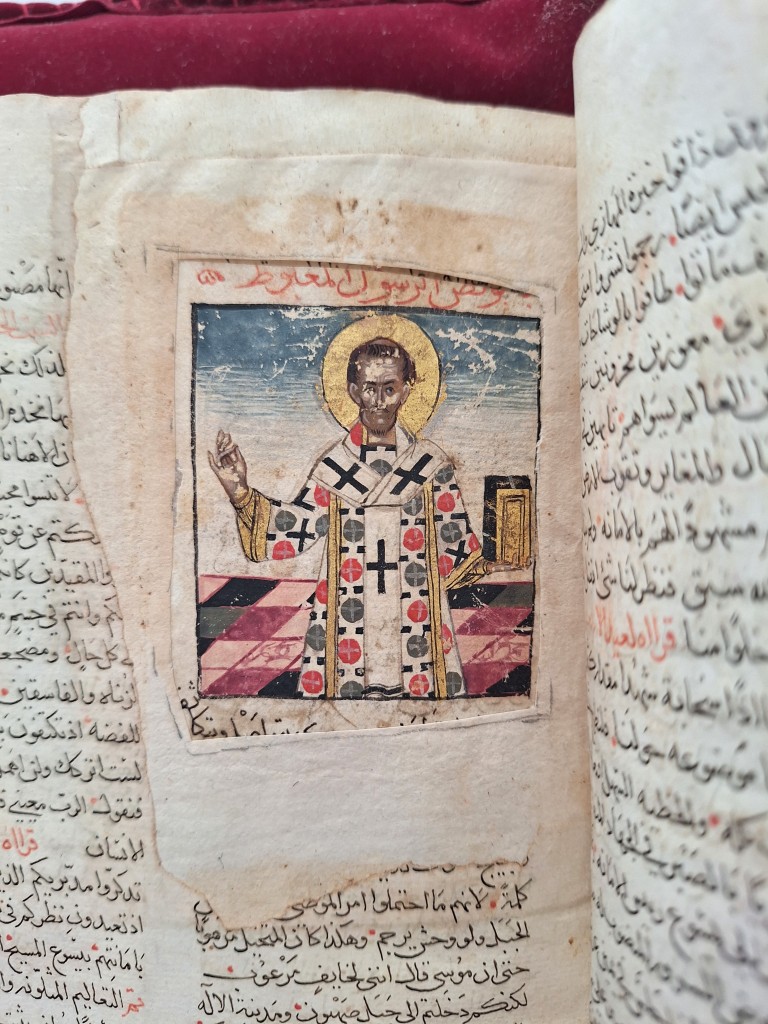The manuscript 441 from the Oriental Library of Saint Joseph’s University in Beirut was entrusted to the Beit Gazo center for conservation last October. This book is considered to be one of the library’s treasures, not only because of the text and the copyist who copied it but also because of its iconography and the quality of its calligraphy.
The text, which includes the New Testament (with the exception of the Apocalypse), was calligraphed by Yusuf al-Musawwir or Joseph the Painter, a multi-talented artist who was also a key figure in the revival of Melkite art in the 17th century. Yusuf al-Musawwir was the grandson of Basili al-Musawwir, a Muscovite painter born in Aleppo. Active from 1641 to 1658, he contributed to the development of the Aleppo School and was the first in a lineage of painters who perpetuated this pictorial tradition by producing icons, illuminated manuscripts, and wall paintings. Aleppo being a cultural and commercial crossroad, Yusuf al-Musawwir’s paintings reflect post-Byzantine and Arab influences. He also turned out to be a translator and took part in the revival of the literary movement of the Melkite Church. Among other things, he translated liturgical texts from Greek into Arabic.
After an in-depth examination of the book, it was decided to carry out a fundamental conservation treatment of the binding, text block and miniatures to enable this treasure to be displayed and consulted. Read the complete article about the conservation treatment here.








Leave a comment